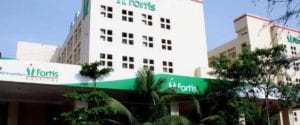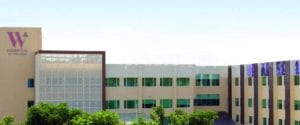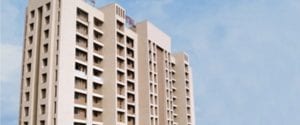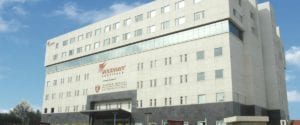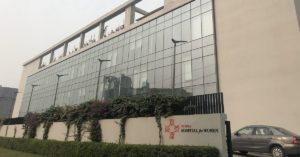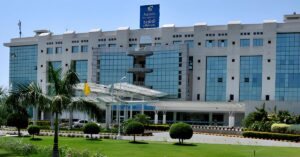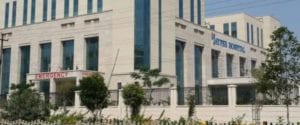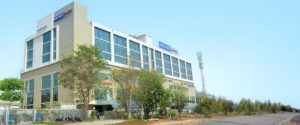Best Doctors in India for Liposuction Surgery
Best Hospitals in India for Liposuction Surgery
- City: Mumbai, India
Hospital Highlights:
- Fortis Hiranandani hospital was established in 2007.
- The hospital is an advanced tertiary care, multi-specialty hospital equipped with 149 beds.
- The hospital is equipped with a super ICU to provide emergency medical care to critically ill patients.
- The hospital is NABH accredited.
- The critical care facility in the hospital is augmented with the state-of-the-art facilities that facilitate speedier diagnosis and efficient monitoring.
- The hospital provides specialty medical services in cardiology, orthopedic science, pediatric science, neurology, diabetic care, urology, nephrology, ENT, obstetrics, gynecology, cosmetic surgery, bariatric surgery, neuro and spine care.
- City: Gurugram, India
Hospital Highlights:
- W Pratiksha Hospital, Gurugram, is one of the best hospitals in the NCR region. It is also a top hospital in India for IVF. Since its inception, the hospital has performed over 5500 successful IVFs. The hospital also specializes in gynecology.
- With over 20 years of experience in providing quality healthcare, the hospital is known as one of the most trusted and valued health providers in India.
- Equipped with world-class medical facilities and advanced technology, the hospital’s doctors and clinicians also have a track record of delivering excellent results. The hospital is also known for focusing on preventive well-being as much as on curative treatment.
- The hospital has earned the trust of its patients, by providing the best available treatments at affordable costs.
- City: Gurugram, India
Hospital Highlights:
- Paras hospital was established in 2006 and is the 250 bedded flagship hospital of Paras Healthcare.
- The is supported by a team of doctors of international and national repute.
- The hospital is NABH accredited and also the first hospital in the region to have a NABL accredited laboratory.
- The hospital provides specialty medical services in around 55 departments including Neurosciences, Joint Replacement, Mother & Child Care, Minimal Invasive Surgery, Gynecology and Obstetrics, Ophthalmology, Dermatology, Endocrinology, Rheumatology, Cosmetic and Plastic surgery.
- The hospital is equipped with state-of-the-art technologies.
- City: Kolkata, India
Hospital Highlights:
- Fortis Hospital, Anandapur, Kolkata is a world-class super-speciality equipped with the latest technologies in the medical world.
- The hospital is NABH accredited.
- This state-of-the-art facility specializes in cardiology and cardiac surgery, urology, nephrology, neurosciences, orthopaedics, digestive care, emergency care and critical care.
- The hospital, governed by integrated Building Management System (IBMS), has a pneumatic chute system, for quick vertical and horizontal transportation between floors, facilitating speedy transfer of patient specimens, documents, reports, and medicines to the concerned departments.
- The hospital also has a nephrology department with over 28 advanced dialysis units.
- City: Mumbai, India
Hospital Highlights:
- SL Raheja hospital is a 140-bed multi-specialty tertiary care hospital that is being managed by Fortis Healthcare Ltd.
- The hospital is a benchmark in healthcare and medical facilities in the neighborhood of Mahim & the western suburbs.
- L.Raheja Hospital, Mahim has one of the most effective ICU and Casualty care services.
- The hospital provides specialty medical services in Cardiology, Oncology, Neurology, Orthopedics, Mother & Child Care, and in Diabetes.
- City: Mumbai, India
Hospital Highlights:
- Wockhardt Hospitals were established in the year 1973, originally called First Hospitals and Heart Institute.
- Wockhardt Hospitals are super specialty health care networks in India, nurtured by Wockhardt Ltd, India’s 5th largest Pharmaceutical and Healthcare company.
- Wockhardt Hospitals is associated with Partners Harvard Medical International, an international arm of Harvard Medical School, USA.
- Wockhardt Heart Hospital performed India’s first endoscopic heart surgery.
- The hospital has a state-of-the-art infrastructure equipped with the latest technologies and modern equipment.
- It has special Centers of Excellence dedicated to the major specialties to provide hassle-free and high-quality clinical care.
- City: Gurugram, India
Hospital Highlights:
- The CK Birla Hospital in Gurugram is a NABH-accredited multi-specialty hospital.
- The hospital strives to increase the quality of healthcare by focusing on UK NHS nurse and midwife training requirements. Policies and practices derived from the National Institute for Health and Treatment Excellence (NICE) recommendations in the United Kingdom ensuring that a strong focus on safety, high-quality clinical care, and sanitation is maintained.
- The hospital’s cutting-edge technology and facilities allow for real-time communication and seamless collaboration among caregivers, ensuring accuracy and the best possible results. Those with foreign experience and accreditations make up part of the hospital’s team of clinicians.
- City: Ahmedabad
Hospital Highlights:
- As a member of the Apollo Hospitals Group, Apollo Hospitals International Limited, Ahmedabad is one of the most popular and sought-after medical facilities in Gujarat.
- Through its 6 Centres of Excellence and various affiliated branches, which cover all specialties and subspecialties, the hospital provides the most advanced clinical services.
- Since its inception in 2003, the hospital has been providing each patient with the most up-to-date medical equipment and state-of-the-art technology.
- With more than 150 successful organ transplants, including liver and renal transplants, the facility has been able to build a strong and extensive organ transplant program.
- In addition to performing 600 surgeries and caring for over 1800 patients on an IP basis, the hospital sees more than 18,000 patients on average in the outpatient department.
- With one of the biggest cardiology teams in the area, the hospital provides state-of-the-art regional care treatment in Cardiac Sciences.
- Additionally, the hospital offers a broad range of Neuro Interventional techniques to help stroke patients recover more quickly.
- City: Noida, India
Hospital Highlights:
- Jaypee Hospital is the flagship hospital of the Jaypee Group.
- This hospital has commissioned 525 beds in the first phase and has been planned and designed as a 1200 bedded multi-specialty facility.
- It holds the accreditation of the NABH and NABL.
- The hospital has state-of-the-art infrastructure equipped with the latest technologies and modern equipment like 64 Slice PET CT, Dual Head 6 Slice SPECT CT, Gamma Camera, and Da Vinci Robotic Surgery for comprehensive robotic surgical solutions.
- It has special Centers dedicated to the major specialties to provide hassle-free and high-quality clinical care.
- City: Mumbai, India
Hospital Highlights:
- Reliance Hospital is one of the best super-specialty care hospitals in Navi Mumbai.
- The main purpose of this hospital is to become a trustworthy place for the best health and hope for society. The hospital is well connected to the suburbs of Mumbai and Navi Mumbai.
- The hospital has various specialty departments, viz., Accident & Emergency, Anesthesiology, Dental Services, Dermatology, Diabetology, Dietetics Nutrition, Endocrinology, ENT, Gastroenterology, General Surgery, Gynaecology And Obstetrics, Hepato Pancreato Biliary Surgery, Infectious Disease, Internal Medicine, Interventional Radiology, Laboratory Medicine, Minimal Access Laparoscopic Surgery, Nephrology, Neurosciences, Opthalmology, Orthopaedics, Paediatrics, Pain Management Palliative Care, Physical Medicine Rehabilitation, Plastic And Reconstructive Surgery, Psychiatry, Pulmonary Medicine, Radiology, Rheumatology, Transplant, Urology Andrology, Vascular Surgery
Liposuction
Liposuction, which is also termed as lipectomy, lipoplasty or liposculpture suction, is a type of cosmetic procedure, which can break up and suck the fat out of the body. It can be used to remove fat from body parts such as the abdomen, neck, buttocks, chin, back, etc. The fat is removed using a hollow instrument known as a cannula, inserted under the skin, after which a powerful, high-pressure vacuum is applied to it. The procedure is carried out under general anesthesia.
Though liposuction can permanently remove fat cells in one’s body, which will alter the body shape, one needs to remember that if the patient refuses to lead a healthy lifestyle after the operation, there is a huge risk that the remaining fat cells will grow even bigger. Though there are some risks in this operation, it is linked to the amount of fat that was removed during the procedure. After the procedure, the skin molds itself to the new contours of the areas which were treated. If your skin tone and elasticity are good, the skin will likely appear smooth. However, if you have thin skin with poor elasticity, the skin in the treated areas might appear loose.
To be able to go through liposuction, it is important that you are in good health without conditions that might cause complications to the procedure. If you have conditions such as diabetes, weak immunity, restricted blood flow or coronary artery disease, complications might likely occur.
Why it is done
People who go through this procedure have more body weight than normal. Therefore, they use it to remove undesirable fat deposits in some specific body parts. However, liposuction should not be considered a treatment for obesity or an overall weight-loss method.
The main purpose of liposuction is to improve the appearance rather than to provide benefits to physical health. The same or even better results can be achieved through a healthy lifestyle, a healthy balanced diet, exercising regularly and proper sleep. Liposuction is advisable only if lifestyle changes have been unable to achieve the results which one was expected. Before one goes for the operation, proper consultation with the doctor is highly recommended.
Preparation
Before the procedure, it is important that you discuss with your surgeon regarding your expectations from the procedure. Your surgeon will review your medical history and ask you regarding any medical conditions which you might be having and any medications, herbs or supplements that you might use. Your surgeon might also ask that you stop taking certain medications such as NSAIDs, at least around three weeks before the procedure is performed.
If only a small amount of fat needs to be removed, your procedure can be done in an office setting. But if a large amount needs to be removed, the procedure has to be done in a hospital, and it will require you to stay overnight as well. In either case, you should consider arranging someone who can drive you home and can stay with you for at least the first night after the procedure.
Types of Liposuction
Tumescent Liposuction is known to be the most common type of liposuction. The surgeon first injects a sterile solution, which is a mixture of saltwater to aid in removing the fat, an anesthetic to relieve the patient’s pain and a drug that will make the blood vessels constrict into the areas that are being treated. Due to the mixture, the affected areas might swell and stiffen.
After this, the surgeon makes small cuts into the patient’s skin after which he inserts a cannula, a thin tube into the skin. This is connected to a vacuum that will suction the fat and fluids from the body. Your body fluid can also be replenished through an intravenous line.
Laser-assisted liposuction is another technique that uses high-intensity laser light which breaks down the fat to remove them. During this technique, the surgeon inserts a laser fiber through an incision in the skin and emulsifies the fat deposits. After this, a cannula is used to remove the fat.
Power-assisted liposuction is another type of liposuction in where the surgeon uses a cannula which moves in a rapid back-and-forth motion. Due to this vibration, the surgeon can pull out tough fat far more easily as well as faster. This method also involves less pain and swelling and allows your surgeon to remove the fat more precisely. This technique is usually used when you have large volumes of fat that require removal.
Ultrasound-assisted liposuction is a type of liposuction is used in conjunction with the traditional liposuction method. During this method, the surgeon inserts a metal rod, which emits ultrasonic energy under the skin. This can rupture the fat-cell walls, resulting in the breaking down of the fat, making them easy to remove.
During the procedure
Some liposuction procedures might require only local or regional anesthesia, as anesthesia is limited to specific areas of the body. However, other procedures can require general anesthesia, which can induce a temporary state of unconsciousness. You might receive a sedative, through a IV injection, so that you can remain calm as well as relaxed.
Your heart rate will be closely monitored by the surgical team, along with your blood pressure and blood oxygen level throughout the procedure. If you were given local anesthesia, and you feel pain during your procedure, inform your surgeon, as your medication or motions may require adjustment. Depending on the fat that needs removal, the procedure can last up to several hours.
If you were administered general anesthesia, you will wake up in the recovery room. If you are in a hospital, you might need to stay overnight to make sure that you’re not dehydrated or in shock due to the fluid loss.
Results
After the procedure, the swelling should subside within a few weeks. The treated area will look less bulky over time. Within several months, you can expect the treated area to have a much leaner appearance.
Though it is natural for the skin to lose some firmness with aging, liposuction generally gives long-lasting results if you are able to maintain your weight.
Risks
There are also a few risks of this procedure, which might result in some complications or side effects. They include:
- Severe bruising which can last up to several weeks.
- Numbness in the affected area for a while, but this is temporary
- Inflammation and swelling which can take up to 6 months to settle
- Thrombophlebitis, a blood clot which forms in a vein can also cause inflammation
- If there is poor skin elasticity or if the fat removal has been uneven, it is possible that the skin can appear withered, wavy, or bumpy.
- Anesthesia involves a small risk of death as well.
- Although it is rare, a skin infection can sometimes occur after the liposuction procedure. This needs to be treated surgically though, with the risk of scarring.
- Although very rare, sometimes liposuction can cause puncture of internal organs.
- Sometimes as the fluids are injected or suctioned, there is a change in the body’s fluid levels, which can cause kidney or heart problems.
- Sometimes, when fluid is injected into the body, it can accumulate in the lungs, which is called pulmonary edema.
- Sometimes, fat can get into the blood vessels, and travel into the lungs, which can block the circulation. Know as pulmonary embolism, this can be quite dangerous life-threatening.
- The cannula movement can sometimes lead to friction burns to the skin or the nerves.

